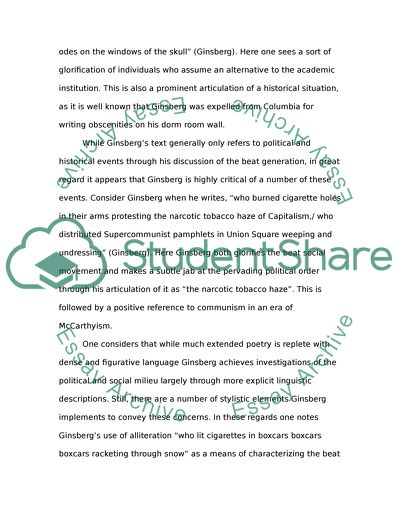Cite this document
(“Howl: Ginsberg Essay Example | Topics and Well Written Essays - 1000 words”, n.d.)
Retrieved from https://studentshare.org/literature/1434904-howl-by-allen-ginsberg
Retrieved from https://studentshare.org/literature/1434904-howl-by-allen-ginsberg
(Howl: Ginsberg Essay Example | Topics and Well Written Essays - 1000 Words)
https://studentshare.org/literature/1434904-howl-by-allen-ginsberg.
https://studentshare.org/literature/1434904-howl-by-allen-ginsberg.
“Howl: Ginsberg Essay Example | Topics and Well Written Essays - 1000 Words”, n.d. https://studentshare.org/literature/1434904-howl-by-allen-ginsberg.


